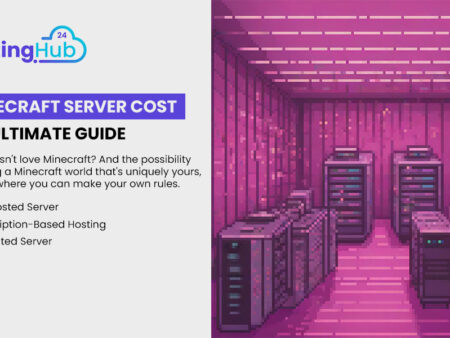Have you heard the term “Platform as a Service” or PaaS and felt confused? You are not alone! Today, building and deploying an application can seem complicated. PaaS can help developers and organisations with this process.
In simple terms, PaaS offers you the possibility of renting a workshop that is fully equipped rather than buying all the tools and constructions. Platform as a Service offers crucial infrastructure, which includes Servers, Storage, Networking, etc. With Platform as a Service, an organization does not have to worry about expanding with additional operating systems, servers, or even software tools. The only task at hand becomes focusing on engineering some of the most breathtaking applications.
In this post, we will examine 10 PaaS examples that are gaining prominence in the market. We will discuss what they provide, their major capabilities, and why many prefer them. So, make sure to have your coffee as we jump into the PaaS ecosystem.
1. AWS Elastic Beanstalk

Few companies offer cloud-computing services, with Amazon at the forefront using AWS Elastic Beanstalk. Elastic Beanstalk is akin to a virtual aide that deploys and manages applications on Amazon’s cloud infrastructure.
Elastic Beanstalk supports Java, .NET, PHP, Node.js, Python, Ruby, Go, and even Docker. This diverse selection enables developers to use their preferred tools and systems. Ensure that all infrastructure-related tasks, such as provisioning, load balancing, auto-scaling, and monitoring application health, are done. All you need to do is concentrate on coding, and the rest will be handled.
Key Strengths
- AWS services compatibility: Having Elastic Beanstalk in the AWS ecosystem facilitates direct access to other AWS services like S3 for storage, RDS for relational databases, and DynamoDB for No-SQL databases. This gives AWS users the ability to create advanced, complex, sophisticated, and scalable applications.
- User-friendly: With the help of a management console, Command Line Interface (CLI), and Software Development Kits (SDKs), Elastic Beanstalk simplifies application deployment, which increases its accessibility. Efficient application management and deployment are achieved through the AWS Management Console, CLI, or SDKs.
- Automatic Scaling and Management: Maintains the performance of applications. During periods of low traffic, it scales down resources. Operational workload is minimized as AWS handles all low-level tasks such as patching, updating, and monitoring.
- Customization and Control: Even while automating tasks like application health monitoring, control over the AWS resources remains with Elastic Beanstalk.
- Why it’s popular: A wide range of businesses looking for effective, streamlined PaaS solutions tend to gravitate towards this one due to effortless usability combined with the powerful AWS infrastructure.
2. Google App Engine
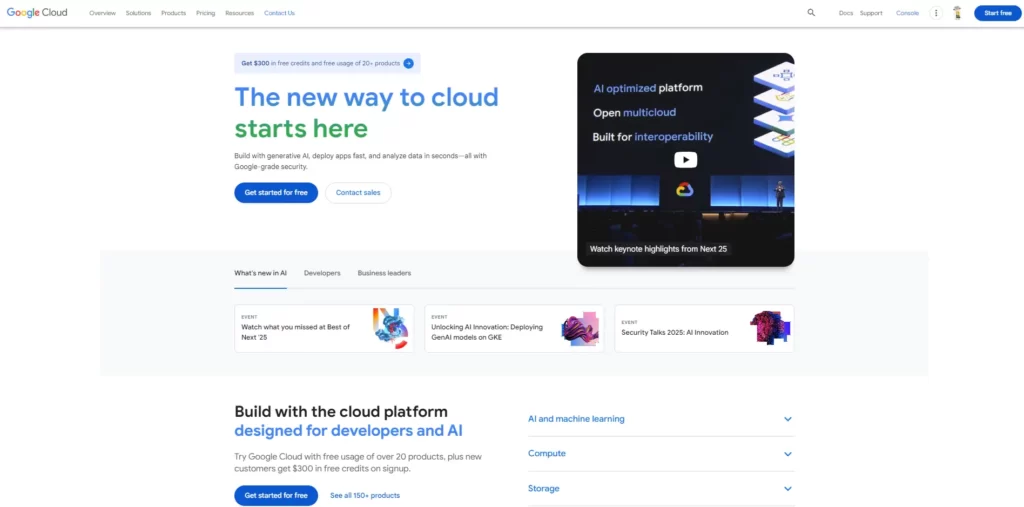
One of the key providers of cloud services is Google, and they offer a fully managed, serverless app on Google App Engine. Serverless does not mean the absence of servers; it indicates that Google will manage all server-side functions so that the client can focus on coding only the application logic.
The app engine’s proprietary application programming interfaces allow for the use of some prominent languages, including Python, Java, Node.js, Go, PHP and Ruby. As in load-balancing and security patching, App Engine provides automatic scaling. It also encompasses data storage (Cloud Datastore, Cloud SQL), caching (Memcache, Redis) and task queues.
Key Strengths
- Automatic Scalability: One of the main features of App Engine is its ability to automatically adjust the number of resources based on traffic changes. This means applications can stay available and perform well, no matter how much traffic they receive.
- Serverless Architecture: The lack of a server requires the absence of operating systems and other updates; patching of the systems is no longer the workload of developers. Due to Google managing all of the system infrastructure, development timelines have become much shorter.
- Deep Integration with Other GCP Services: Its integration with other GCP services like BigQuery for data analytics, Cloud Functions for serverless computing, and Cloud Storage is seamless.
- Cost Effectiveness: It is economical for several workloads since GCP only charges for the resources consumed by the application.
- Reasons for Popularity: It is preferred by developers due to its ease in automating application scaling, strong integration with other GCP services, and the fully managed nature of the platform.
3. Microsoft Azure App Service
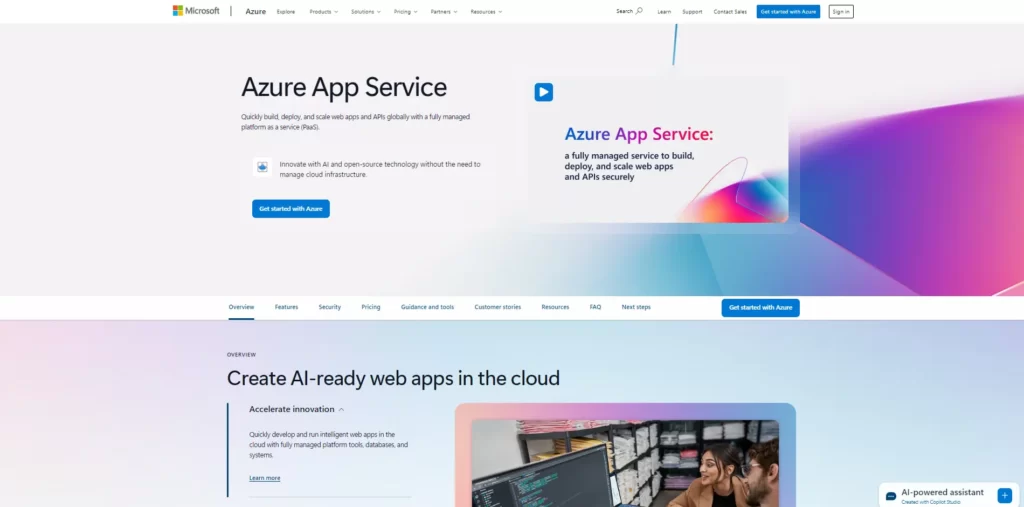
From the whole range of services offered by Microsoft, Azure App Service could be considered the most practical example of PaaS. It is a fully managed platform for developing, deploying, and scaling web applications alongside mobile backends and APIs.
One of the unique features of Azure is its support for almost all major programming languages, including .NET, .NET Core, Java, Node.js, Python, PHP and Ruby. With Azure, users get robust features such as automatic scaling, load balancing, patching, and development tools. It has automatic scaling, load balancing, security patching, as well as development tools. Moreover, it has deployment slots for staging and testing as well as CI/CD capabilities.
Main Competitive Advantages
- Diversity in Its Selection of Languages and Frameworks: The diverse technologies make it easier to adopt by different development teams.
- Integrated Development Experience: Uses Microsoft’s development tools like Visual Studio and Azure DevOps, which allows an orderly succession of development and deployment steps.
- Robust Security and Compliance: The Azure app service is virtually unrivalled in security and compliance features, making it a protected area for sensitive applications.
- Hybrid Capabilities: The integration of private and public cloud components provided by Azure is unmatched.
- Why it’s popular: The extensive supported technologies, deep integration with Microsoft tools, and advanced security features make it a popular solution, especially for organizations deeply rooted in the Microsoft ecosystem.
4. Heroku
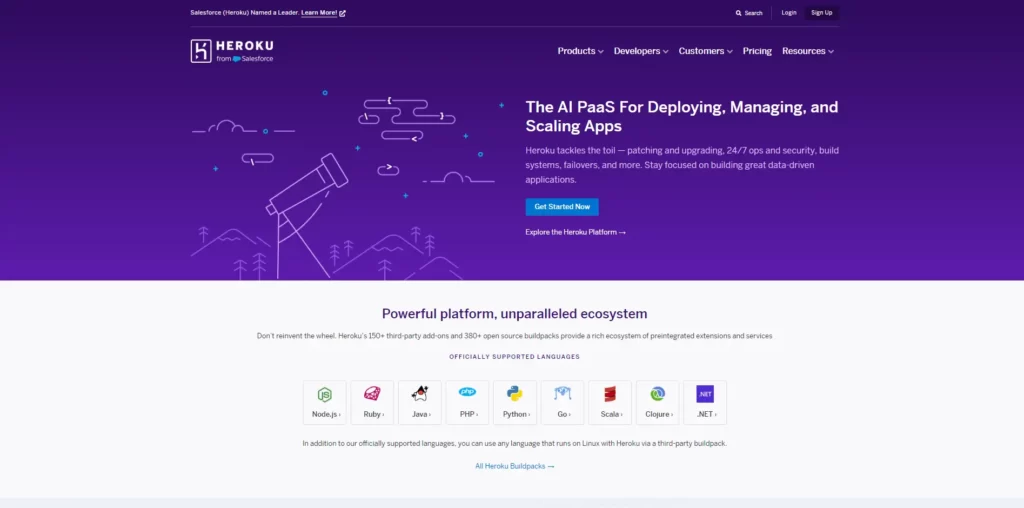
Heroku was established in 2007 and is popular among individual developers and startups due to its simplicity, enabling effortless management and deployment of applications.
However, Heroku supports various programming languages spanning from Ruby, Python and Node.js to Java, PHP, Go and even Scala. In addition, with Heroku, users gain access to a rich ecosystem with an array of add-ons feature databases, logging, monitoring, as well as other relevant services.
Key Strengths
- One of Heroku’s key strengths is having one of the easiest-to-use and visually appealing user interfaces, along with some command-line tools.
- Heroku has numerous add-ons and tools for databases that users can purchase, improving the user’s experience further. Thus aiding the user’s experience.
- Heroku is also famous for its ease of use and enables horizontal scaling to manage increased traffic load.
- An exchange marketplace where users can buy and sell add-ons enhances the application’s operations, broadening additional tools for the increase of the application’s functionalities.
- As previously established, Heroku’s user interface enhances and focuses on the user’s experience, enabling easy management of complicated structures, resulting in feedback as simple. Therefore, rapid prototyping and small to medium-sized applications result in ease of use.
5. Red Hat OpenShift
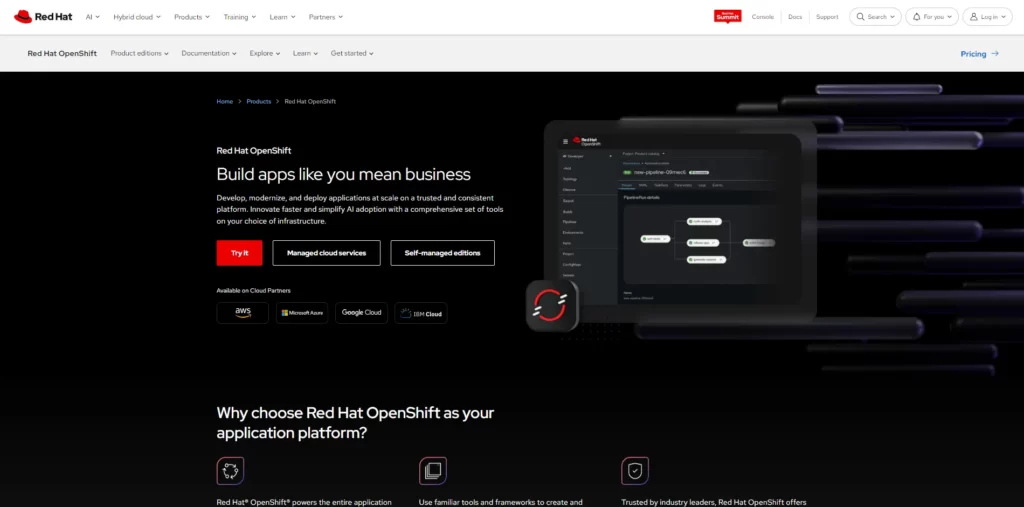
Built on top of the container orchestrator, Kubernetes, Red Hat OpenShift is a PaaS for containerized applications and a container-enabled platform. It pivots on modern PaaS with its contemporary features and agility.
OpenShift has numerous options with different languages along with public cloud, private cloud and on-premises, providing an ecosystem for the frameworks, which makes this platform quite diverse. For health monitoring, auto-scaling, and other avenues, containerized applications have plentiful tools at their disposal.
Key Strengths
- Kubernetes Power: Container-orchestrated, OpenShift helps gain a competitive edge on Kubernetes, which improves ease of scaling and resiliency across environments.
- Hybrid Cloud Flexibility: OpenShift’s true hybrid cloud capabilities allow real multi-cloud useability, being deployable in various regions.
- Developer Productivity: Development tools are now easier and streamlined workflow with simpler deployment interfaces, which tends to improve developers agility.
- Enterprise-Grade Features: Alongside strong security, compliance certifications, management features, and large organizational ideal-tailored features, OpenShift assures protection for corp globals.
- Why It’s Popular: The reason for OpenShift’s popularity can be attributed to its robust architecture derived from Kubernetes, its suitability for hybrid cloud environments, enterprise-grade capabilities, and ease of adoption for enterprises and businesses looking to transition into containerization.
6. Cloud Foundry

Cloud Foundry is a multi-cloud application platform that is open source. It gives developers an environment where they can build, deploy and run applications without managing the infrastructure.
Through building packs providing the runtime environment needed, Cloud Foundry mounts other programming language frameworks, offering features such as automatic scaling, load balancing, health management, and even service brokers to integrate with backend services.
Key Strengths
- Multi-Cloud Support: Its ability to run on virtually all cloud providers such as AWS, Azure, GCP, etc.
- Open Source: The open source model encourages proactive, collective engagement from users and developers and ensures sustained project evolution as well as a plethora of materials.
- Developer Productivity: Focuses on improving developer productivity by removing unnecessary infrastructure-level details.
- Extensibility: Buildpacks and service brokers facilitate an organization’s architecture extensions, augmentations, or adaptations, enabling effortless custom developments.
- Why it is Popular: Its appeal to businesses looking for cloud interoperability is its multi-cloud capabilities. These, along with an unrestricted community-supported framework, make any organization to mitigate vendor lock-in advantages.
7. Digital Ocean App Platform
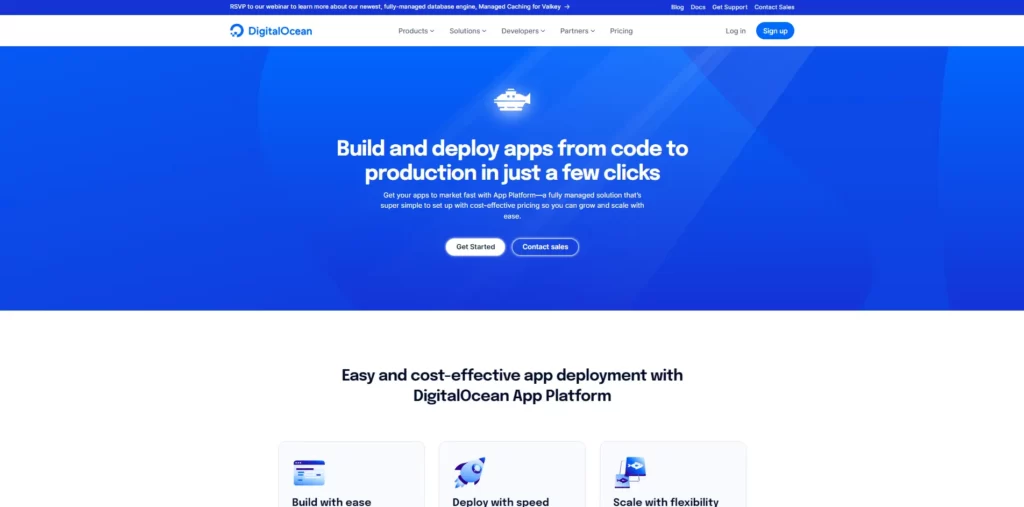
Digital Ocean is recognized for its straightforward and accessible cloud services geared toward developers. Now, with their App Platform, they aim to ease the processes of deploying and scaling web applications and static sites.
Digital Ocean App Platform offers npm, “Node.js,” Python, “Go,” PHP, Ruby, static sites, and Docker. Automatic builds from git repositories and automatic scaling, TLS certificates, and global CDN are also offered.
Key Strengths
- Simplicity: Streamlined workflows are user-friendly when deploying and managing applications.
- Affordability: The App Platform is appealing for early stage companies and individuals due to their competitively priced products.
- Integrated Ecosystem: Other DigitalOcean products, such as Droplets and Managed Databases, connect smoothly with it.
- Automatic HTTPS and CDN: Global SSL certificates and CDN are provided with no extra configuration, ensuring a boost to security and functionality. For provisioned users of DigitalOcean, its simplicity, low price, and ecosystem are a go-to.
8. IBM Cloud Foundry
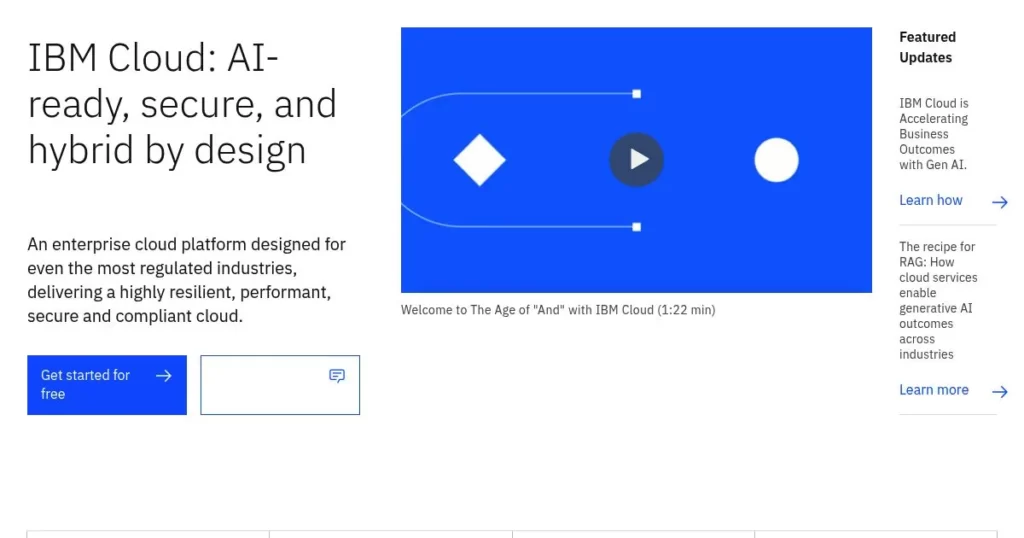
This is IBM’s implementation of Cloud Foundry. It is built on open sources and gives a powerful environment for deploying and designing new applications.
Since it is built on open sources, it can incorporate multiple languages and frameworks using build packs. It also possesses enterprise features, including high-grade security, compliance audits, and an IBM cloud services connection.
Key Strengths
- Enterprise Focus: Designed for large companies needing sophisticated security, governance, and compliance requirements.
- Integration with IBM Cloud: Incorporates IBM’s other cloud offerings, data science cloud, AI services, and even blockchain.
- Fast Scalability and Reliability: Embedded support for mission-critical applications supplies unparalleled scalability and reliability.
- Hybrid Cloud Capabilities: IBM’s Cloud Foundry offering underscores the company’s strong hybrid cloud strategy since it enables deployment to multiple environments.
- Why it’s popular: Customers within the IBM ecosystem or those needing a full-fledged PaaS system with enterprise-grade capabilities prefer it due to its distinct enterprise-oriented attributes, integration with IBM Cloud services, and scalability.
9. Alibaba Cloud Elastic Compute Service (ECS)
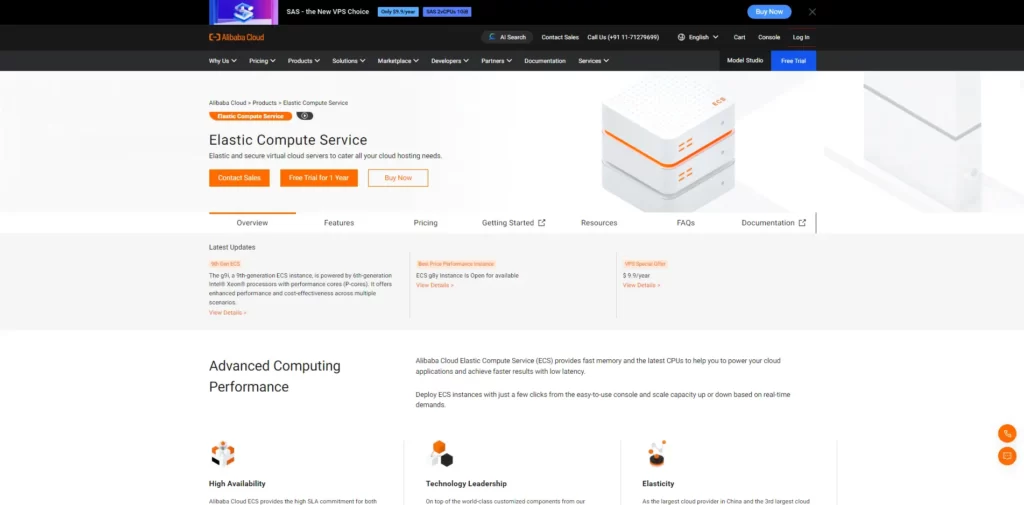
Container service for Kubernetes (ACK) Alibaba Cloud has one of the leading positions as a cloud service provider in Asia. Their Elastic Compute Service (ECS), alongside Container Service for Kubernetes (ACK), provides a powerful and flexible PaaS solution based on containerization.
ECS provides virtual machines, and ACK gives a fully managed Kubernetes service, which makes deploying, managing and scaling containerized applications much easier. The combination provides ample flexible infrastructure along with powerful orchestration.
Key strengths
- Kubernetes Management: ACK alleviates most of the burdens related to the management of the Kubernetes clusters.
- Integration with Alibaba Cloud Ecosystem: It integrates effortlessly with other services provided by Alibaba Cloud like ApsaraDB for databases and OSS for Object Storage Services.
- Global Infrastructure: Alibaba Cloud’s extensive global infrastructure provides a regional presence as well as low latency.
- Why it’s popular: Businesses looking for growth in the Asia Pacific area can take advantage of Alibaba’s ECS in combination with ACK, which gives an integrated strong solution to deploy and scale containerized applications.
10. Render
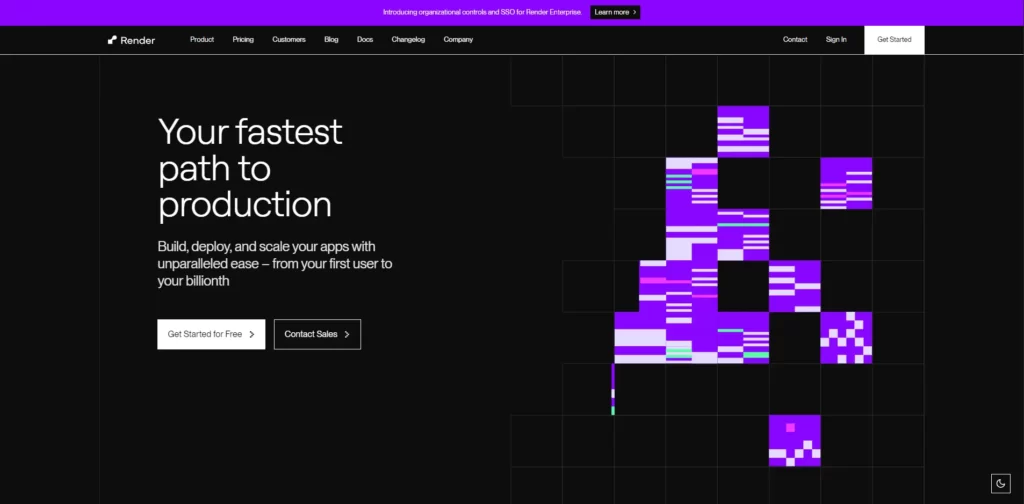
Render is a new entrant to the PaaS marketplace, offering a zero-configuration deployment for web apps and static websites. It promises speedy and simplified deployments.
Render supports one of the wide array of Node.js, Python, Go, Ruby, PHP, and static sites. It provides automatic deployments from Git, automatic issuance of TLS certificates, global CDN, along autoscaling.
Key Strengths
- Zero Configuration: Render’s distinguishing attribute is ease of access with minimal configuration for deployment.
- Fast Deployment: Applications can be launched from Git repositories in a matter of minutes.
- Built-in HTTPS and CDN: Global CDN access alongside free distributed SSL certs is offered instantly.
- Developer Friendly: Focused on the ease and convenience of developers, it helps provide a more fluid workflow.
- Why it’s popular: The focus on deployment automation with limited manual intervention appeals to developers who wish to host applications rapidly without infrastructure hassle.
The Right PaaS for You
Your project objectives, team skills, budget, expansion requirements, and technology preferences determine which PaaS to select. Elastic Beanstalk, for example, is great if you already deeply engaged with the AWS ecosystem and need a flexible and scalable platform.
- If you require serverless computing and automatic scaling, Google App Engine is powerful within the Google Cloud.
- If you are a Microsoft-centric organization wanting broad language support and easy integration with an ecosystem, Azure App Service is promising.
- For a great ease of use and developer experience, especially within small projects, Heroku remains popular.
- Red Hat OpenShift is robust if you’re adopting containerization and want a Kubernetes-based platform with hybrid cloud flexibility.
- Cloud Foundry is compelling for multi-cloud portability and is an open-source platform.
- DigitalOcean App Platform is an excellent choice to consider for simplicity and low-cost options especially for individual developers and startups.
- IBM Cloud Foundry is a solid choice when looking for enterprise-grade features and integration within the IBM Cloud.
- For studies specifically dealing with the Asia Pacific region, Alibaba Cloud ECS integrated with ACK offers flexible and scalable solutions using container technology.
- Without a doubt, the simplest form of deployment, which requires no configuration at all, is Render.
Bottom Line
The way applications are constructed, launched, and handled has been transformed by Platform as a Service. As a great ease of use offered by PaaS, it removes infrastructure complexities, enabling developers to improve and provide greater value at accelerated rates. From individual developers on side projects to massive corporations focused on essential systems, a multitude of PaaS solutions available have optimized workflow and goal achievement in the cloud. Explore the most popular options and decide which one serves you best.


